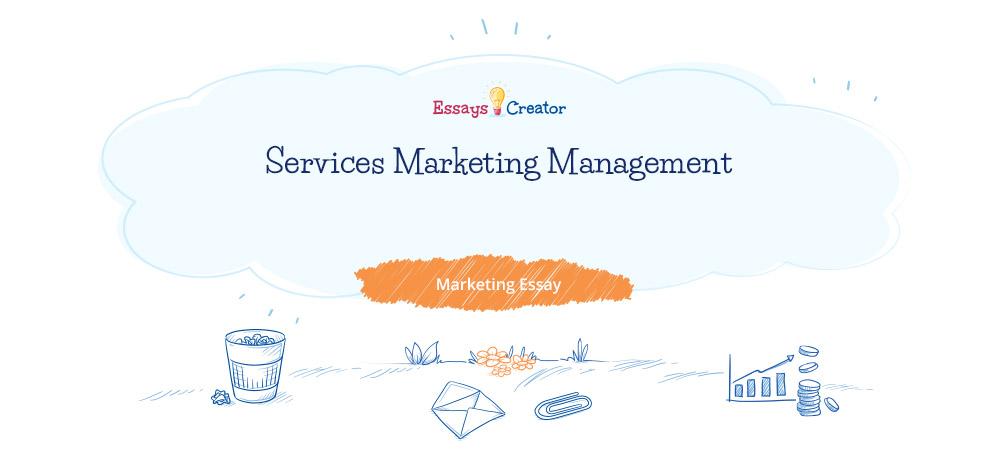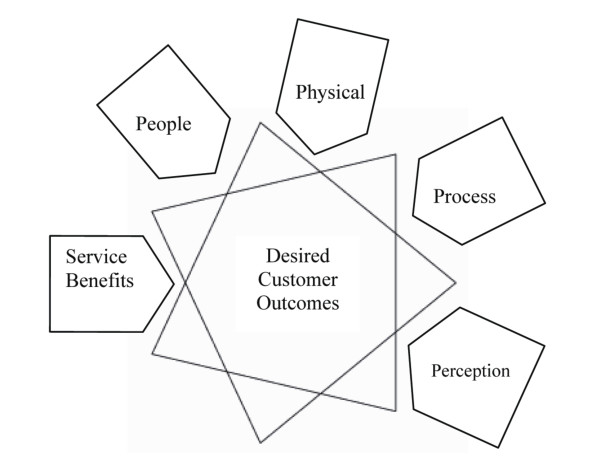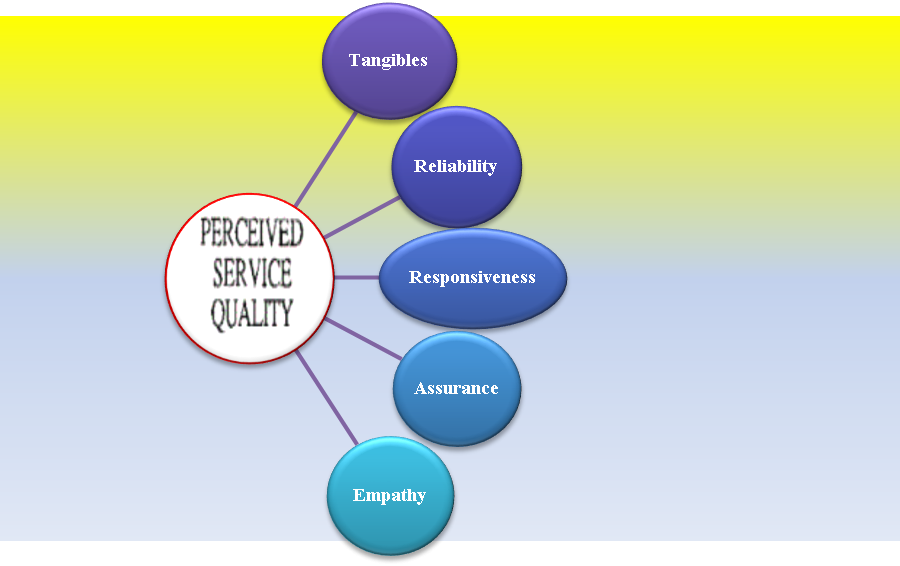
Introduction
Drawing upon the contemporary statistical data, “since 1970, the service sector has grown from 53% of the UK economy to 73% today,” while the manufacturing industries have “declined from 33% to 16%” (Tilly 2012, p. 1). It follows that the performance of service organizations nowadays is of great importance in the consumer market. Moreover, this tendency concerns not only the UK but also the world in general. Significance and development of this sector are especially facilitated by technological advancement as society becomes more “information-driven and service-based” (Hemmasi, Strong & Taylor 2011, p. 24).
On the other hand, it should be noted that the increase of the service sector’s role in the economy is enhanced by growing scientific interest in the field, as well as diversified and improved practical approaches to its performance. To be more precise, companies currently tend to use sophisticated methods to develop their business. For instance, since the late 1950s, the customer segmentation technique has been widely implemented by service firms and its popularity increased. In the 1980s, the SERVQUAL approach was created by a group of scholars – Parasuraman, Zeithaml, and Berry – to assist organizational management in clarifying the gaps in their strategies, making them flexible, and fixing to deliver the best service possible. What is more, the service concept itself has evolved immensely, and now this notion can be completely individualized under the specified factors of this or another company’s operations. Although each of the aforementioned theoretical frameworks has its specifics and shortcomings, they are influential indicators of modern business functioning.
Order your Marketing Essay help today!
Therefore, the paper discusses the service concept, customer segmentation, SERVQUAL marketing tools, and how their proper application is able to enhance the performance of a service organisation.
Service Concept
Although the definition of the service concept has been constantly transformed by various researchers, who added specified implications to the understanding of this term, it is generally accepted that marketers perceive it through the prism of their organization’s business activities. Nonetheless, overall, this notion can be referred to as a shared mental manager-to-consumer understanding of the service provided. In this way, the main purpose of the service concept is to research and clarify consumers’ needs and expectations concerning the service to create and implement the maximally suitable management strategy per these findings. This technique is a key phase in the developmental framework planning. It is due to this properly performed stage that the management of the company may predict what fits best to the clients’ wishes and win the positive attitude and buying behavior of the targeted audience.
The service concept comprises of the so-called 4 Ps, or marketing mix, – product (i.e. service), price, place, and promotion. To make a service-concept-based model a success, these characteristics need to be equally perceived by customers, managers, and other stakeholders. Additionally, managers are to know that consumers comprehend the service as a whole but not a mix of joint elements. In other words, service components are, as a rule, not physical entities, but rather “a combination of processes, people, skills and material that must be appropriately integrated to result in the ‘planned’ and ‘designed’ service” (Kaner & Karni 2006, p. 231). For instance, when a just married couple rides on a carriage with Victorian-era decorations along the park full of their guests, it is perceived as a royal-like wedding rather than a chain of elements, such as carriage-horses-decorations-guests, etc.
However, some scholars, such as Fynes and Lally (2008), underline that it is hard for service managers to express “the true nature of their service concept” (p. 329). Particularly, this notion may be often confused with business strategy, the organizational vision, brand in general, and so forth. Of course, all these terms assume financial gains for the company. Nonetheless, the service concept is developed on a rather emotional level of the consumers’ experience compared to other business models. Specifically, the above-indicated researchers have proposed a modified service-concept model to ensure the maximal degree of the desired customer outcomes (see Figure 1).

Figure 1. Conceptual framework of service concept model (Fynes & Lally 2008, p. 331)
For example, the aforementioned service of the fairy wedding can be discussed according to Fynes and Lally’s service concept model. In case managers do not take into account all factors, the wedding will not be royal-like. However, if they apply decorations of that historical period, music of that time, some bell rings (physical), people will be dressed appropriately, and the process will be organized thoroughly, customers will get benefits of feeling like a royal couple. Thus, desired consumer outcomes will be achieved. As a result, all guests present at the wedding will be able to feel this atmosphere and advertise (i.e. word-of-mouth brand value) this service company to anyone they know.
Customer Segmentation
As Weinstein (2010) has aptly noted, “Segmentation-based marketing is the essence of sound business strategy and value creation” (p. 3). Indeed, the contemporary business does not aim to create all-embracing marketing frameworks to reach and convince to buy their services as many consumers as possible. Conversely, for-profits tend to provide what will be bought for sure by those who are willing to buy. In this regard, customer segmentation involves the division of the market on homogenous groups of potential buyers in terms of their needs and features, who would supposedly perform similar purchasing behavior. Hence, the central aim of this approach is to hit the targeted audience most accurately.
Undoubtedly, this consumer-driven model is applied to ensure the efficiency and high profitability of the services provided. This method may be implemented through several dimensions. First, geographic segmentation is related to the area where the service is provided. For instance, the company may provide different kinds of services to urban and rural residents. Second, a demographic partition of the market includes a variety of services offered for consumers by their age, gender, income, and family-status characteristics. Particularly, the previously discussed wedding services are affordable for high-income clients, while the organization may provide another type of service for people with lower earnings. Third, the division of customers per psychographic attribute is another kind of segmentation. Following it, potential buyers can be targeted by their values, lifestyles, and attitudes. For example, fitness centers can divide their customers by lifestyles: mothers with kids can be offered morning pieces of training, whereas working audience may do exercises after work, and so forth. Fourth, behavioral segmentation targets people under their potential behavior concerning the services (prices, advantages, brand loyalty, etc.). Specifically, when some people would be glad to visit an exhibition farm and watch the process of milking in a specified room, others may be ready to pay more for exotic – milking on their own, feeding the animals, for example.
Apart from the above-listed benefits, the development of the marketing strategies specifically for a narrowed intended group has some shortcomings. If a small company creates a segmentation model for some particular limited audience, one will comprise a little number of its consumers. To put it another way, segmenting a market per consumers share is quite costly since there should be a specified (or at least modified) framework for a separate segment. Therefore, such an approach can be affordable for highly profitable organizations mostly. On the other hand, even a small business may be successful due to some targeted customer segment and develop its expanding strategies concerning other consumers groups with time. For example, the floweriest shop provides a service of making flower presents targeting loving couples at first. Then, the company may offer decoration services for the wedding and other holidays, targeting brides, grooms, and married couples, as well as families of different ages. Thus, this strategy can be efficiently implemented either as a transformation of the organizational performance for efficiency of its business operations or a practice of the ongoing expansion of market shares.
Customer Expectations and Perceptions with Specific Reference to the Gaps Model – SERVQUAL
Although today customers’ preferences change at an unstoppable pace, the quality of the service provided remains the prime attribute of the company’s success. One of the researchers of this issue, Shen (2012), has accented that, “The business with service quality will meet customers’ needs while remaining economically competitive” (p. 11). Among the most popular measures for service quality rate, there is a SERVQUAL model, which is calculated as “a difference between performance and consumers’ expectations” (Anand & Selvaraj 2013, p. 301). Since the time of its conceptualization in the late 1980s, the formula has been modified. Nowadays, five (instead of ten) major determinants influence the perceived service quality level (refer to Figure 2), which can be clarified utilizing consumers’ questionnaires.

Figure 2. Critical components of the SERVQUAL framework
Besides providing information about consumer satisfaction, this model helps understand the gaps in the strategy implementation process about its different stages and finding ways to further improve. The first notable gap is related to wrongly perceived consumer expectation, i.e. when the management failed to formulate a service concept properly. To illustrate, the tourist-firm managers might have thought their customers were waiting for a seasonal price decrease, but clients wanted the company to offer a larger number of countries to travel to. One more important sphere for clarification is the lack of harmony between the managerial perception of service provided and the specification of its quality. For instance, the tourist agency could have recognized that its customers need the expanded number of countries to travel but perceived the issue in the end without meeting the current needs of its consumers. In addition, the management can realize the consumers’ expectations and specify the term of their fulfillment, but there may be a bad delivery of service. More so, the promoted service level may not be appropriate to the real one, which is another gap in the service quality (a five-star hotel can be a three-star, with numerous inconveniences, etc.).
To sum up, the SERVQUAL model can become a good instrument to monitor failures that have occurred during the initially not thoroughly researched and planned as well as not carefully developed service concept or business strategy. In this way, the flexibility of the business framework will be ensured and necessary improvements made in the process. However, there is a need to put stress that this theoretical model has met some criticism, underlying that five determinants outlined by Parasuraman, Zeithaml, and Berry are not common for any business possible. In this regard, it will be necessary to individualize the business performance of a particular service organization and list appropriate to the specified firm or industry vital characteristics to clarify whether or not the service delivered is of high quality.
Conclusions and Recommendations
Therefore, the paper has paid attention to the analysis of the service concept, customer segmentation, SERVQUAL marketing tools, and the ability of their proper application to enhance the performance of a service organization. It has been clarified that all these factors are important for the performance of a contemporary service firm. Specifically, if the company can find its targeted market segment and understand what this group of people requires, it will provide the customers with a service of high quality. Of course, there are specified limiting obstacles about each concept (an improperly defined or confused notion, too high price for small businesses, uncommon quality attributes, etc.), but they all can be overcome in case service managers research and analyze their business field closely and accurately.
Thus, it is to be stressed that the theoretical frameworks discussed in the paper may be a great advantage for the service organization in case several conditions are followed. First, the company has to research thoroughly its consumer market, its needs, and demands, as well as services available among its competitors in the industry. Hence, the current guaranty for success is not about the uniqueness of the service offered but concerning its necessity, timeliness, and quality of performance. Indeed, the above-indicated vital aspects of the modern service industry can be implemented through the concepts considered in the paper. Additionally, some of them (e.g. SERVQUAL) may be applied on several stages of the process: for instance, a pre-planning survey can be conducted to clarify the customers’ expectations and monitored further on the next stages.

